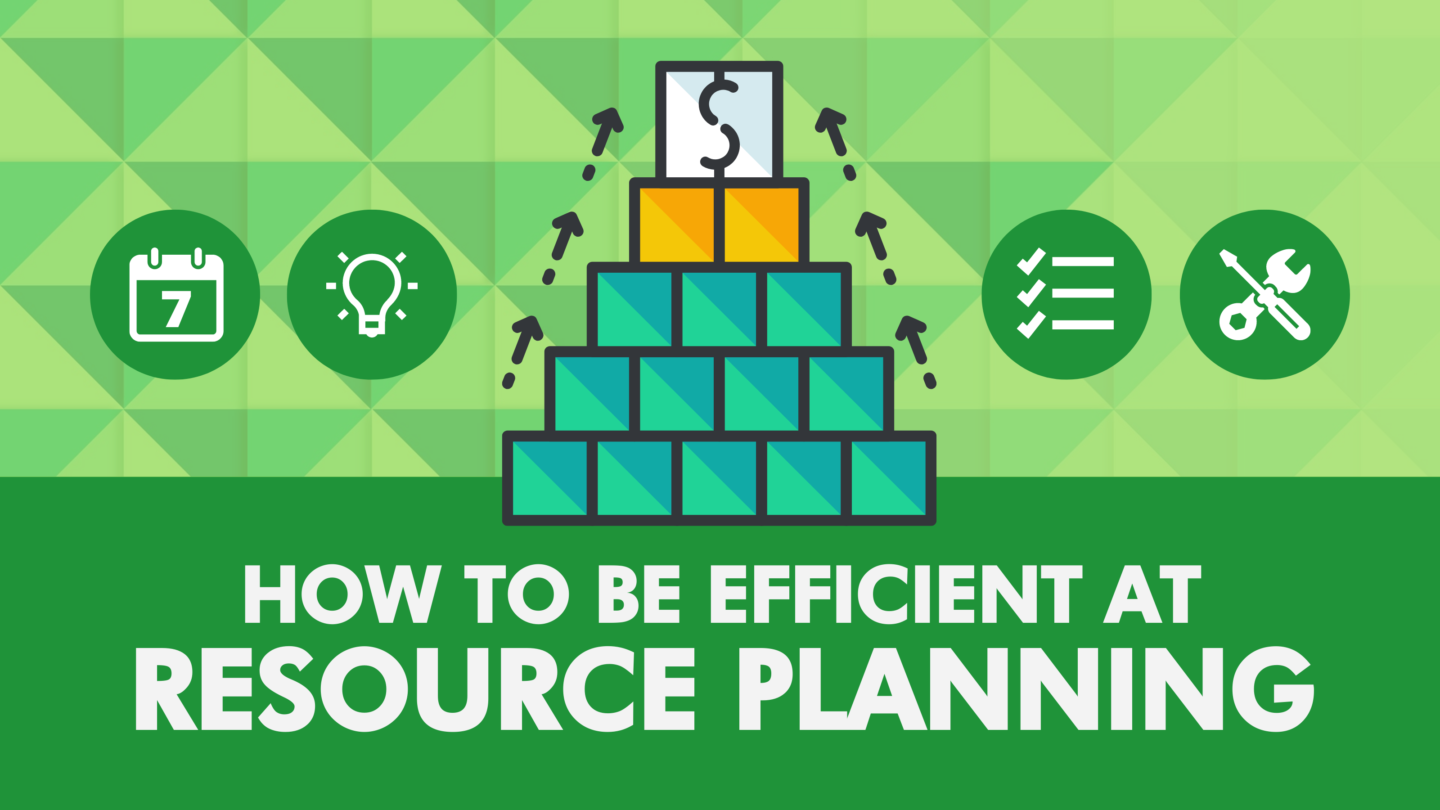
How to be Efficient at Resource Planning
Whenever your company or organization is planning to tackle a new project, typically there will be plenty of planning that needs to be done. In addition to defining what tasks need to be accomplished, and how to go about achieving your objectives, you also have to partake in resource planning.
What is Resource Planning?
Resource planning is defined as the act of allocating specific resources to a project. When preparing to begin a project, it’s important to not only know which specific tasks will need to be completed, but also what resources will be needed to accomplish them. This includes people, equipment, and materials necessary for the task’s completion, the quantity of each, and the duration of their necessity. Once a project manager recognizes the necessary tasks, identifies the resources they will need in order to complete the tasks, they’ll be able to align the project’s deliverables with the available resources.
A smart way to take advantage of resource planning is to break down the project into manageable parts. Identify the tasks associated with each section, their milestones, and what completing them will do for the overall project. When it’s broken down this way, it’s easier to estimate what resources will be needed, and where and when.
Why is Resource Planning Important?
In a project management context, resource planning is essential. Without effective resource planning, it is much harder to maintain control over certain variables of the project, including the method of its execution, the timeline for its completion, budgeting properly, and more. Project managers need to know what resources a project will require, what resources they already have access to, and what resources they will need to acquire – ideally before beginning to plan the execution of the project. In order to accomplish this, organizations will enlist the help of a Resource Manager.
A Resource Manager is a key component of resource planning. This position relieves the Project Manager of the duty of organizing the necessary resources, allowing them to focus on other essential aspects of the project. The Resource Manager is responsible for effectively planning and making economic use of the available resources, and ensuring project deliverables are consistently aligned with the organization’s available resources.
Tips for Effective Resource Planning
Like any sort of prep work, resource planning must be considered carefully in order to be used to its maximum efficiency. Here are some tips and tools to use when resource planning.
Before You Start
- First, you will need to break down the project’s structure into smaller parts. When the overall scope of the project seems more manageable, it’s much easier to see what sort of people and teams you’ll need to complete it.
- Next, you’ll need to make an estimate as to how long the project will take to complete. Since it will be broken down, try to come up with a timeline for each section – that will make it much easier to calculate how many resources you’ll need for each part, and be able to schedule them accordingly. One way to calculate an estimated duration is by using the critical path method: this shows the project’s overall structure, but also has a breakdown of each individual task. When aiming towards regular, smaller milestones, as opposed to a daunting overarching objective, it is much easier to get an accurate estimate of what will be required for successful completion, both time- and resource-wise.
- Once you’ve established what you’re going to need to complete the project, it’s time to find people who can execute these tasks. They’ll have to have the appropriate expertise and competencies to complete the task, and, more importantly, must be available for the entire estimated duration of the project. This can sometimes be a problem, as other teams may want specific people for their own projects, so it’s important to schedule them accordingly. In the current climate, it is also important to keep note of the changing availability for displaced workers. Because of this, regular and clear communication with those you enlist is essential in order to ensure steady progress towards completion.

During the Project
- Resource planning isn’t finished once you have an outline for the project. Rather, it is an ongoing effort that needs to be constantly updated to reflect any changes that might happen, i.e. a change in an employee’s availability, loss of a certain resource, etc. This is why it’s important to have resource meetings relatively frequently. These should be short, regular meetings that give project managers a chance to discuss roles and responsibilities as they pertain to resource planning. Holding weekly virtual check-in meetings can ensure communication lines remain open amongst your team while working from home. Keep in mind that collaboration should be held to the same standard as it was when in-person meetings could be held. Encouraging teamwork, open communication, and collaborative thinking ensure that any hiccups in the project’s process can be identified and remedied immediately.
- As mentioned, adjustments will constantly have to be made when resource planning. It’s important to optimize resource allocation, so specific areas that need certain resources at any point in the project’s development have access to them. The project or resource manager will be responsible for adjusting the schedule of a project if necessary, in order to solve conflicts that may arise due to incorrect allocation of resources.
- Get several views on the project. Expert judgment comes from your experience, but senior colleagues may be able to offer insight as well. Another option is to have your organization hire an outside consultant to analyze your resource planning. Having multiple viewpoints and opinions from qualified individuals is very important to the success of your project. When working remotely, be sure to remain aware of the security of your project and its contents, especially when considering inviting an outside individual to consult with you on your resource planning. While multiple viewpoints are harder to come across when working on a virtual platform, their value is still worth the additional effort.
- Always be thinking ahead and considering different possible scenarios. If you have a prepared plan of action complete with strong, well thought-out solutions to potential disruptions or changes in the future, you’ll be prepared in the event it actually happens, and will also be able to offer a sense of security to your team should any doubts arise or morale is lost.
- Another strong tactic involved in resource planning is a bottom-up estimation. This method uses the people who will be involved in the project in order to get a more refined estimate of what a particular component of work will require. In the bottom-up estimating method, each task of the project is broken down into smaller components, and then individual estimates are pulled from the people working on those smaller areas of the project to determined what is specifically needed to meet the requirements of each of these smaller components of work. Individuals can then use their relevant experiences to help estimate budgets, resource allocation, etc. Bottom-up estimation can be employed in the beginning stages of your project development, but is also an effective way to keep track of project progression, and maintain control over the moving variables and expected or unexpected changes that can occur during a project’s completion.
Resource Planning is Critical for Success
Engaging in resource planning at every stage of a project is an essential part of setting yourself up for success.




